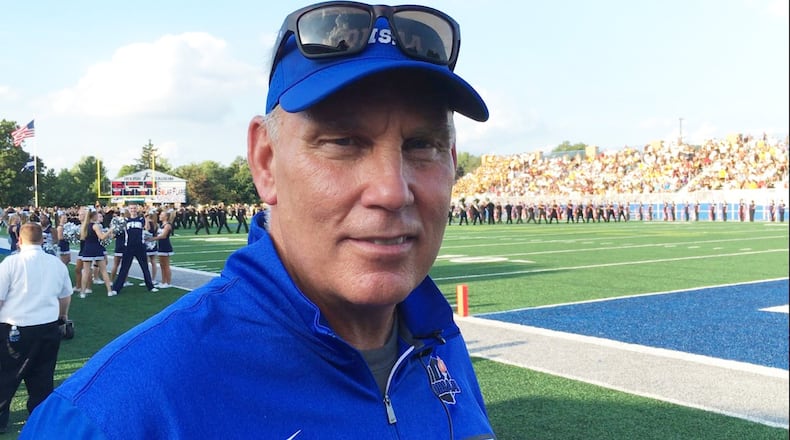»» RELATED: OHSAA vows to fight lawsuit
Non-public schools must still pick a bordering public school district as its feeder boundary. The additional Tier 1 option is effective immediately, meaning schools can revise roster data already submitted to the OHSAA for the next school year. The additional option will be implemented for football, soccer and volleyball in the fall of 2020.
The lawsuit was filed in April of 2018 on behalf of the eight current GCL Co-Ed schools – Alter, Badin, Carroll, Chaminade Julienne, Fenwick, McNicholas, Purcell Marian and Roger Bacon. A temporary restraining order blocking the lawsuit was initially granted by the Supreme Court of Ohio. The restraining order was eventually upheld in the Hamilton County Court of Common Pleas, which required competitive balance not to be applied to those eight schools. The OHSAA countered by requesting Ohio’s Supreme Court to deny the restraining order. That was rejected last July.
»» RELATED: OHSAA lands restraining order
The GCL Co-Ed schools contended they were unfairly limited to one feeder school despite similar long histories of drawing students from multiple nearby elementary schools. The OHSAA claimed a ruling in favor of the GCL Co-Ed would affect all Ohio schools and effectively end competitive balance.
“We are thankful that the OHSAA was willing to hear our concerns and collaborate with us on an agreement that represents a significant step towards true competitive balance,” said Carroll principal Matthew Sableski in a release. “The 12.5-mile radius option addresses our concerns.”
»» SOCIAL MEDIA: You should like Marc Pendleton on Facebook and Twitter
The OHSAA’s competitive balance initiative was implemented in 2014 in an effort to “level the playing field” between public schools and where non-public schools draw their students. It’s a numerical formula derived from where students began the seventh grade, if a student did not attend a designated feeder school continuously from the seven grade and if students were not enrolled in the same “system of education” since seventh grade.
Those values are assigned to players on rosters for most OHSAA girls and boys sports and determine which division a team is assigned for the postseason. That is annually adjusted each spring and implemented for the following school year.
GCL Co-Ed administrators and the OHSAA had hoped to resolve the issue out of court.
“While the OHSAA feels strongly that there are better processes in place to voice concerns and bring about change within our framework than what was followed by the GCL Co-Ed in this instance, ultimately we recognize that the goal for competitive balance has always been to make it fair and equitable for all schools and to level the playing field,” OHSAA Commissioner Jerry Snodgrass said in the release.
“We believe this new option does that and promotes the fairness considerations surrounding competitive balance.”
Competitive balance came about in response to a disporportionate amount of state championships won by non-public schools. It was twice voted down by OHSAA membership and underwent multiple structure changes. It also drew the ire of most non-public schools, who believed they were being unfairly targeted for their athletics success.
About the Author
